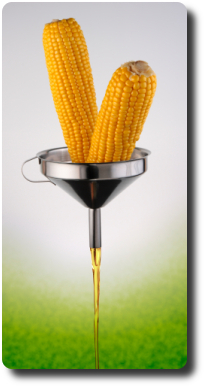 When it comes to traditional oil-based gasoline, there is a factor to consider that often goes overlooked: Distribution. We like to envision biofuels (ethanol in particular) as a more readily abundant resource that will flow along the same rusty pipelines that currently transport crude. Here’s the catch though, like modern brake fluid, ethanol is hygroscopic by nature. This means that it immediately soaks up water both in liquid form and as condensation right from the atmosphere. Hence ethanol cannot be transported through petrol pipelines. Worse yet is that even prolonged exposure to the air itself can begin to dilute ethanol (due to water absorption) so as it stands the only means of transporting the fuel would be by enclosed trailer via rail or tanker-truck. In either case the obvious trouble comes from the fact that fuel would have to be burned in effort to transport the fuel.
When it comes to traditional oil-based gasoline, there is a factor to consider that often goes overlooked: Distribution. We like to envision biofuels (ethanol in particular) as a more readily abundant resource that will flow along the same rusty pipelines that currently transport crude. Here’s the catch though, like modern brake fluid, ethanol is hygroscopic by nature. This means that it immediately soaks up water both in liquid form and as condensation right from the atmosphere. Hence ethanol cannot be transported through petrol pipelines. Worse yet is that even prolonged exposure to the air itself can begin to dilute ethanol (due to water absorption) so as it stands the only means of transporting the fuel would be by enclosed trailer via rail or tanker-truck. In either case the obvious trouble comes from the fact that fuel would have to be burned in effort to transport the fuel.
Here’s the other issue; E85 (which is available now) contains roughly 70% of the energy content per gallon when compared to oil based gasoline. In the real world this means more volume of E85 is required to travel the same distance as with regular. When taken into consideration the fact that E85 costs about 20% less than crude-based gasoline, the savings basically cancel themselves out.
What is interesting, however, is that the knock-resistance of E85 surpasses even the highest grade premium oil-gasoline (closer to the tune of 103 octane) meaning that when engines (and gas stations alike) eventually make the full transition to E85, consumers will be getting bonus performance benefits for about the cost of today’s mid-grade oil-based fuel. Manufacturers will be able to exploit this fact through higher compression engines. With proper tuning, it is possible to regain the inherent energy loss that comes with burning E85.






If I run 10% ethanol fuel in my truck, I get 20% worse mpg. So if I would use the 10% mix, I would need to use more gas. If I only lost 10%, I still wouldn’t like ethanol, but it least I wouldn’t be burning more gas. I thought the point of using ethanol was so we wouldn’t use as much gas. I have heard other people say they lose between 15 to 20% mph. Has anyone else seen this decrease? If so, isn’t this the opposite of what we wanted, and how to we fix it?